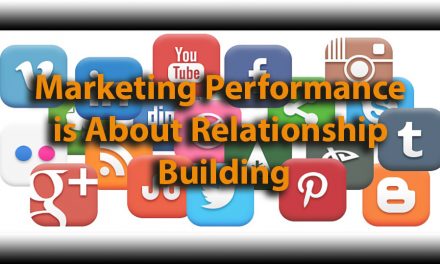The HVAC industry has struggled to keep up with a shortage of qualified employees for many years. With projected continued growth, the gap between supply and demand will only increase. So now is the time to be proactive and develop a strategy to retain good employees once you find them. Improving employee engagement can help make your company a place where people want to work.

Steve Vannoy
So, what’s the big deal about employee engagement? Well, to get technical about it, employee engagement is a concept that attempts to both quantitatively and qualitatively understand the relationship between a company and its employees. But what does that mean to you and your business on a practical level?
Although the idea of employee engagement has been around for a while under various guises such as employee morale, or job satisfaction, it has more recently come into sharper focus in relation to the new generation of worker. With millennials now making up a larger portion of the workforce, perhaps it’s time to update our idea of what contributes to developing fully engaged employees, and why it matters.
The Problem ‘
According to a recent survey by Dale Carnegie Training (ncilink.com/DC-Study) and MSW Research (ncilink.com/MSWResearch), only about 29% of employees are fully engaged in their jobs. About 45% are partially engaged, and 26% are actively disengaged.
That’s right’ more than a quarter of your workforce may have essentially ‘checked out!” And with almost another half only partially engaged, that can have a pretty destructive impact on your business. Plunging productivity, falling profits, poor customer satisfaction, and sinking employee morale are just a few of the damaging effects that come to mind.
A 2017 Gallup report estimated the cost of actively disengaged employees to businesses nationwide was well over $483 billion in lost productivity. The term they coined was that disengaged employees generate a cost of ‘presenteeism.’ (See what they did there?) That is more than a little disturbing.
The flip side of the coin is that businesses with engaged employees enjoy some substantial benefits. According to the same Gallup report, reduced absenteeism, less employee turnover, fewer quality defects, and increased customer satisfaction were just a few. All of this resulted in 17% better productivity, 20% higher sales, and 21% greater profits. So, I think it would be fair to say that an organization with high employee engagement could be expected to outperform those with low employee engagement.
The Engaged Employee?
What is an engaged employee? One way to define it would be that an engaged employee is one who is fully involved in, and enthusiastic about their job, and who actively seeks to advance company goals and interests.

Fully engaged employees make stronger, better teams.
An engaged employee has an optimistic attitude towards the company and, equally important, their future with it. The next obvious question is how do you get and keep them engaged? Research shows that there are some key factors that drive employee engagement:
- 60% of respondents in the Gallup report said that being able to do what they do best has the greatest impact
- Career advancement and learning opportunities rank highly
- Perception of the importance of their job within the company is another major factor
- Their opinion of the company values and leadership also plays a role.
Engaged employees have an emotional commitment to the company when they feel an intrinsic desire to work for a company rather than feeling compelled to work there.
Create a Learning Culture ‘
How do you create an environment in your company that encourages engagement and commitment from your employees, and improves outcomes throughout the business?
I propose that one way to address each of the preceding factors is to create a learning culture in your company. Establish a climate where individual employee growth is not only encouraged but expected. Your workforce will feel more engaged with and connected to their jobs, and to the company. But to be clear, building a learning culture means that leadership must be fully engaged too.

Your business can equip employees to meet performance objectives, learn new skills to better perform their jobs, and provide opportunities for career advancement. To make this happen, you can’t just talk about learning, you must actively support it and be involved in it. Managers who are fully invested in creating and sustaining a learning culture need to model learning behaviors and support the training and development of employees at every level. All too often management may talk a good game but fail to provide the resources and support to achieve that goal.
Focus on Opportunities ‘
Studies show that employees are willing and eager to learn. Fifty-three percent of respondents to one recent survey said they could do their jobs better with more training opportunities. Sixty-three percent said their engagement level would improve if given more job training and learning access. More than 8 in 10 millennials in the workforce rated professional growth and development as important to them. Yet less than four in 10 said they learned something new in the past month that would help them improve their job performance.
Here are a few suggestions as you take a closer look at the level of employee engagement in your company and consider developing a learning culture.
Training and development help people learn new skills and improve their performance and productivity. Most people want to feel they are valued by the company, and few people want to remain static in their role.
Make sure you are clear about the link training provides between where you are now, and where you want to go. And make sure your employees understand that link too!
 Connect training and learning to specific company and employee goals. Never do training just for the sake of saying you did training. Learning opportunities should be viewed as a reward and incentive, not a chore. Employees should know what’s in it for them.
Connect training and learning to specific company and employee goals. Never do training just for the sake of saying you did training. Learning opportunities should be viewed as a reward and incentive, not a chore. Employees should know what’s in it for them.
You and other managers in the company should be prepared to mentor and coach employees following training. Follow up is critical! The best training in the world will fade away if it is not supported and sustained until it becomes ingrained in job performance.
Set goals and objectives. Give and request regular feedback on training and performance results. Engaged management can go a long way toward motivating employees to give their best.
Employee engagement should be approached with the same focus and intensity as you approach customer service in your company. Done effectively, a learning culture can provide a dynamic means to fully engage employees. When you send the message to employees that they are valued for their contribution, that they have opportunities to grow, and that their development is enthusiastically supported by the company, the payoff can be spectacular.













Recent Comments